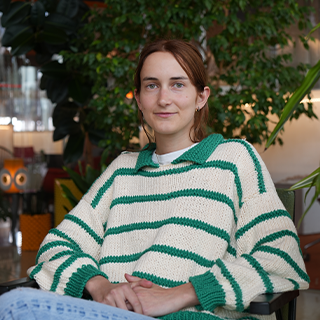Biphasic sleep versus polyphasic sleep: what are they and could they benefit you?

My sleeping schedule has always been somewhat difficult. As I’ve grown older, my ability to sleep in on weekends in order to catch up on the hours lost during the week—I used to blame Vine for it, now I’ve switched to TikTok—has vanished. Aged 25, I now struggle with finding the right sleeping habit that lets me both feel energised during the day and tired enough to actually go to bed at a ‘reasonable’ time. And I’m pretty sure many can relate to this important but often overlooked problem.
Until now, I’ve always ignored it unless it clearly impacts my mental health (which it did in the past), thinking that it’s just the way things are. But then, during my daily nocturnal TikTok session, I stumbled upon a video on the topic of biphasic and polyphasic sleep. Those were two different sleep patterns that most people used to follow—before the Industrial Revolution led us to the recommended single stretch of 8 hours sleep, known as monophasic sleep.
So, what are biphasic and polyphasic sleep, and could they actually be more beneficial than monophasic sleep? Here’s everything you need to know.
What is biphasic sleep?
A biphasic sleep pattern is when someone sleeps twice per day, sometimes referred to as a ‘siesta sleeping pattern’. Those who practice biphasic sleep typically sleep for a long duration at night, around 5 to 6 hours, and have a shorter period of sleep during the day. The shorter period typically lasts between 30 and 90 minutes, giving an energy boost to finish the day—think of it as a daily disco nap.
For those who tend to go for a siesta of 90 minutes, it means that they can achieve one complete cycle of sleep through those two periods of sleep.
Before the Industrial Revolution, biphasic sleep (as well as polyphasic sleep, which I’ll get to shortly) was the go-to sleeping pattern for most people. As Refinery29 explained in an article on the topic, “people would go to bed when the sun went down, sleep for several hours, wake up for a few hours to make love, say their prayers or do chores before going back to bed until dawn.”
Nowadays however, monophasic sleep has become the norm due to our longer-than-normal hours of working time. While some say that biphasic sleep is healthier than a monophasic pattern, and although there are some countries (like Spain) that have adopted it as the norm, others argue that it could lead to brain damage, memory loss and increase chances of suffering from Alzheimer’s in the future.
Although both arguments are discussed among the somnology community, naps are known to be more beneficial in short intervals and a more natural way of sleeping. Furthermore, the suggested benefits of naps include improved memory and learning ability, increased alertness, and an improved mood. Sounds pretty good to me.
What is polyphasic sleep?
A polyphasic sleep pattern is when a person sleeps for periods of time throughout the day (from 4 to 6 times a day). According to Medical News Today, these sleep combinations can be broken down into three different categories:
– Everyman: A long sleep time of around 3 hours with approximately three 20-minute naps throughout the day.
– Uberman: Only 3 hours of sleep per day in the form of six 30-minute naps throughout the day.
– Dymaxion: Only 2 hours of sleep per day, in the form of 30-minute naps every 6 hours.
Should you try changing your monophasic sleep schedule?
Let me start by saying that I am no sleep doctor, and that this is only research I’ve done on my own. That being said, it certainly looks like biphasic and polyphasic sleep could be potential replacements for the standard we are used to—even as a short-lived hype.
As more of us have been forced to work from home, our standard 7 to 8 hour working day has been disrupted—and with it our sleeping habits too. On top of that, our reliance on technology and brighter screens means that maintaining a healthy sleeping schedule has become near impossible in modern times. With sleep becoming an increasingly discussed issue, it’s only natural for people to begin researching alternative sleeping patterns, such as biphasic and polyphasic sleep.
Research in 2010 found daytime napping to have a positive influence on cognitive functioning, with larger benefits being seen with naps lasting longer than 30 minutes. You would think that these findings would therefore apply to biphasic and polyphasic sleep.
On the other hand, one study in 2012 found napping to be a poor method to achieve quality rest and could result in lower cognitive performance. Bear in mind, however, this study was performed on preschoolers so data might not be applicable to an adult population.
All in all, these two alternative sleep patterns seem to come with both positives and negatives. Whether your current sleeping habits are so bad that you’d like to try something new is up to you. As for me, I think I’ll start experimenting with more disco naps and truly listen to my body when it tells me it’s exhausted instead of chugging more coffee. Until then, goodnight, sleep tight, and don’t let the bedbugs bite!





